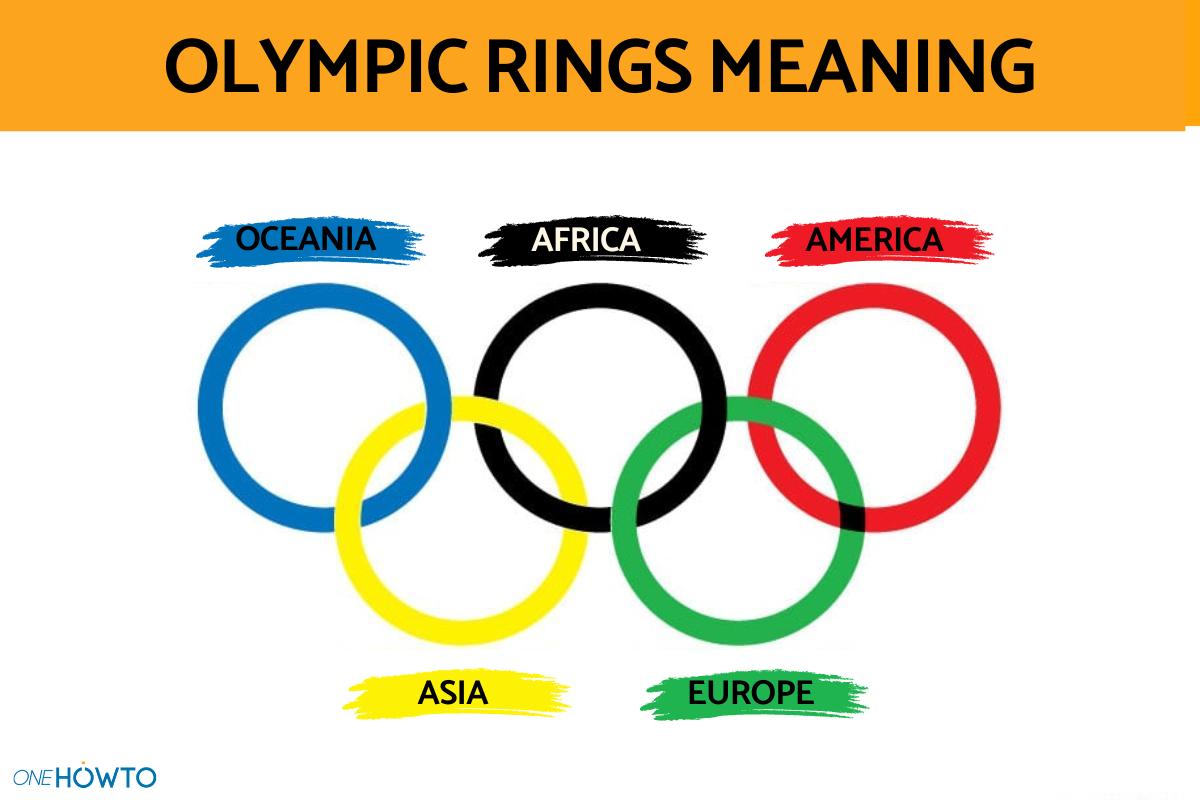What Is the Meaning and Origin of the Olympic Rings?


The meaning of the Olympic rings is that each represent the 5 continents of the world. The colors of the Olympic rings are blue (Oceania), black (Africa), red (America), yellow (Asia) and green (Europe). Their origin is seen by their creator, Baron Pierre de Coubertin. Although he first designed the Olympic rings in 1913, they were not adopted as an official symbol if the Olympics until 1920.
At oneHOWTO, we ask what is the meaning and origin of the Olympic rings? We discover more about the color of each Olympic ring as they appear on the Olympic flag and are used as symbols for unity across the world.
Meaning of the Olympic rings and their colors
The five Olympic rings that can be seen on flags, promotions and other official material for the Olympic Games represent the 5 continents of the world. The Olympic colors are blue, black, red, yellow and green each corresponding to certain features of the territories they represent.
Continents are the large geographical areas which represent certain regions of the world. The amount of continents varies according to different criteria. The five that are represented in the Olympic ring symbols are the territories from which sportspersons compete in the games. For example, Antarctica is not represented because there is there are no sovereign states and an insufficient population of humans to compete.
To know what the Olympic rings are, it is important to be clear that they represent the five continents and the individual peoples they represent from Oceania, Europe, Africa, America and Asia. At the same time, they intertwine with each other as a symbol of global unity. The first time the Olympic rings were used officially was at the Antwerp Olympic Games in 1920.
When the rings are orientated in a circle, it represents continuity and eternity, meaning there is no beginning or end. The Olympic rings also represent athletes. Although their origins may be very different, they are joined or intertwined in a human fraternity.
It is important to note that the symbolism of each color specifically pertaining to a continent or region was applied after the fact. Coubertin did not necessarily mean for each color to have a specific correlation in terms of continent. However, these colors were attributed by many people due to the following:
- Blue ring: represents Oceania, the region most surrounded by seas and oceans.
- Green ring: represents Europe because it is the continent with the greatest diversity of mountains and forests.
- Black ring: corresponds to Africa because it appears on many African flags.
- Red ring: corresponds to America because this color appears in almost all the flags of this continent.
- Yellow ring: represents Asia because of the deserts that extend across much of the territory and because it is the area where the sun rises.

History and origin of the Olympic rings
The Olympic rings symbolize the spirit and strength of the Olympic Games by uniting the five continents with five interconnected rings of different colors. This design pays tribute to the connection between countries worldwide. The rings were introduced to the Olympics in 1913, after the first modern Olympic Games in Athens in 1896. Their design masterfully combines precision, unity, and simplicity.
Baron Pierre de Coubertin was a key figure in the Olympic movement. He created the rings. He first presented a simple sketch of the rings during the Olympic Congress in Paris. Inspired by psychoanalyst Carl Jung's symbology, the rings represent continuity and the human cycle of athletes.
The official introduction of the Olympic rings was delayed until 1920 due to World War I. The rings were first displayed at the Olympic Games in Antwerp, becoming one of the event's most iconic symbols.
Learn more about World War I with our article on the bloodiest battles in history.
Uses of the Olympic rings
According to the International Olympic Committee (IOC), there are different types of uses for the Olympic rings. They are the following:
- The Olympic medals bear the design of the five rings
- The official posters of the Olympic Games.
- The Olympic emblems both in the different logos of the games and in the emblems of each of the 204 national Olympic committees
- In stamps and philately
- In souvenirs and promotional items from the Olympic Games
- On the coat of arms of Lausanne (Switzerland)
Lausanne is a city that has been declared the Olympic capital since 1993 because it has been the IOC college since 1913.
The false ‘Olympic stone’
During the organization of the 1936 Berlin Olympic Games, it was decided to honor the ancient games with a symbolic connection to Delphi, Greece. A stone with five rings carved on its faces was prepared as part of this tribute. It was not used in the torch relay or carried to Berlin, but it was used as a symbol to help draw a line between the ancient and modern games.
After the 1936 Berlin Olympic Games, the stone remained in Delphi. In 1950, passing British writers saw this stone among other ruins and mistakenly believed they had found a relic of the original Greek Olympic ceremonies. Since then, many people have continued to believe that this stone is ancient, but historical evidence shows that it is a modern creation.

More symbols of the Olympic Games
The Olympic rings are one of the main symbols of the Olympic Games, but there are others which are used in similar ways. They include the following:
- Olympic flag (with the five rings)
- Olympic letter
- Olympic anthem
- Olympic torch and flame
- Olympic oath
- Olympic motto
- Cauldron
- Medals
- Podium
- Olive wreaths
- Diplomas
- Pets
- Pictograms
- Logos
Now that you know better the meaning and origin of the Olympic rings, you may want to read about comparisons between sports which are similar, but one is an Olympic sport and the other is not. This can be seen with our article on the differences between tennis and padel.
If you want to read similar articles to What Is the Meaning and Origin of the Olympic Rings?, we recommend you visit our Sports category.






